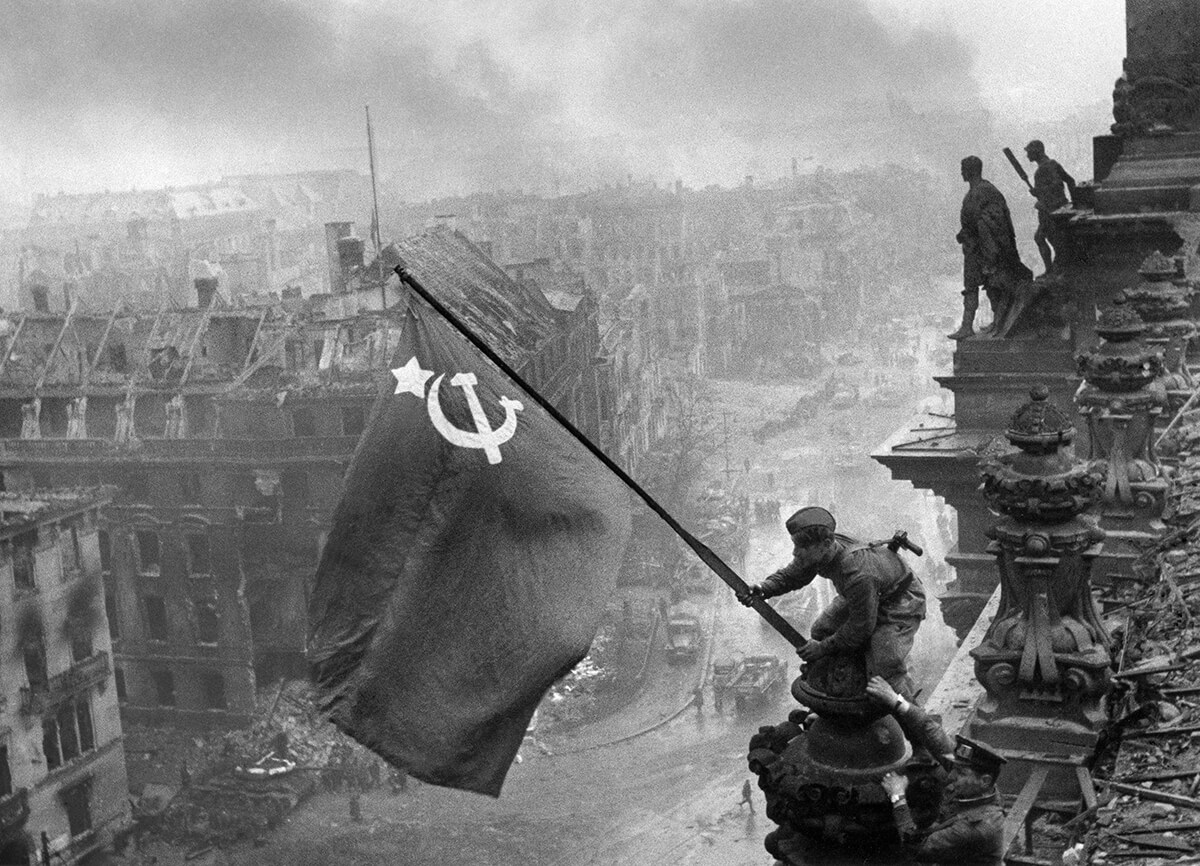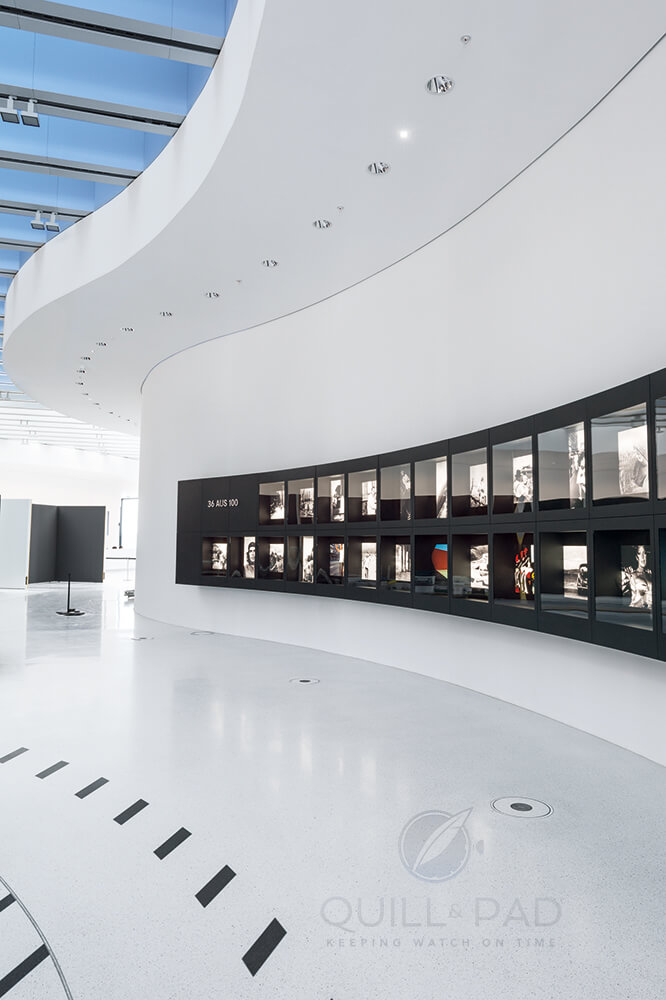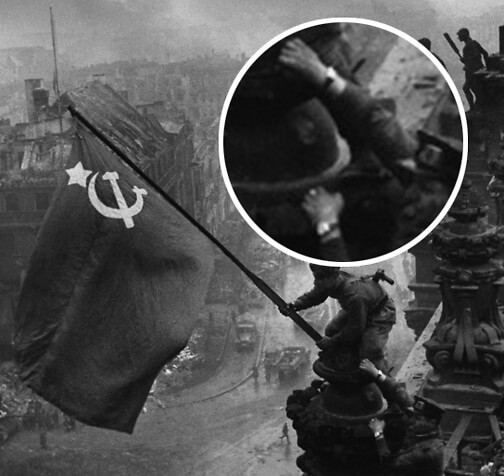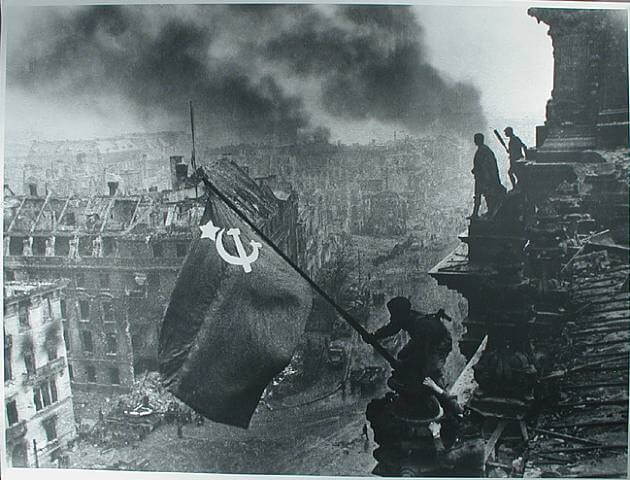Last week I visited the Leica factory and spent some time admiring an exhibition called “36 aus 100” (“36 from 100”) in the spacious foyer of this massive new factory building.
The premise of this installation is to show 36 literally iconic (yes, I know that this word is terribly mis- and overused, but here it truly fits) examples of Leica photography from the last 100 years.
The subjects were extremely varied and many of the images have written chapters in the large book of photographic history. All definitely contributed to the reputation Leica has garnered over the foregone century.
All 36 images illustrate specific aesthetics only possible with 35 mm photography.
As my “tour guide” (an employee of Leica) took us through the exhibition, explaining some of its high points, we stopped for a long moment at this photograph. I will admit never having seen it before, though I was familiar with many others in the exhibition.

Yevgeny Khaldei’s original photo of the Soviet flag being raised on the Reichstag, the German parliament building in the center of Berlin
The image of the soldier wearing two watches – perhaps very, very briefly reminding me of the late Nicolas G. Hayek’s penchant for wearing two timepieces – caught my attention.
And, in fact, this is what the tour guide had pointed out: he described this image as perhaps the world’s first well-known “Photoshopped” photograph. That caught my interest next. And the story of it goes as follows.
Yevgeny Khaldei took this photo on May 2, 1945, and it depicts a re-enactment of a Red Army soldier hoisting a flag above the bombed-out German Reichstag building.
There is an officer helping the soldier, and if you look closely you will see he is wearing two wristwatches, one on each wrist.
Unfortunately, we cannot see what kind of watches they were and as a seasoned watch spotter, this would interest me greatly.
Of course, during the war wearing multiple watches would not have been a common occurrence and the image is likely to be evidence of the looting that went on.
This photograph was published in the Soviet magazine Ogonjok on May 13, 1945 (it became a symbolically important post-war photograph in the Soviet Union); however, the photograph was retouched to remove one of the watches from the officer’s wrist to hide the incriminating evidence.
For more on the photographer and the photograph, please read The Art of Soviet Propaganda: Iconic Red Army Reichstag Photo Faked from Germany’s prestigious weekly news magazine, Der Spiegel.
The “36 aus 100” installation will remain in place for at least one year in the entrance foyer of the new Leica factory in Wetzlar, Germany. If you’re in the area, it is definitely worth looking at and philosophizing over.
For more information please visit the photographic exhibition 36 aus 100.
And if you missed these articles on Quill & Pad, please check out Leica Celebrates 100 Years: A Factory Tour In Wetzlar, Germany and Leica’s Very Special Limited Edition EL 1 Chrono With Valbray.




Trackbacks & Pingbacks
[…] And for Elizabeth’s related articles, please click: Leica Celebrates 100 Years: A Factory Tour In Wetzlar, Germany and Historic Yevgeny Khaldei Photograph In Leica Exhibition. […]
Leave a Reply
Want to join the discussion?Feel free to contribute!